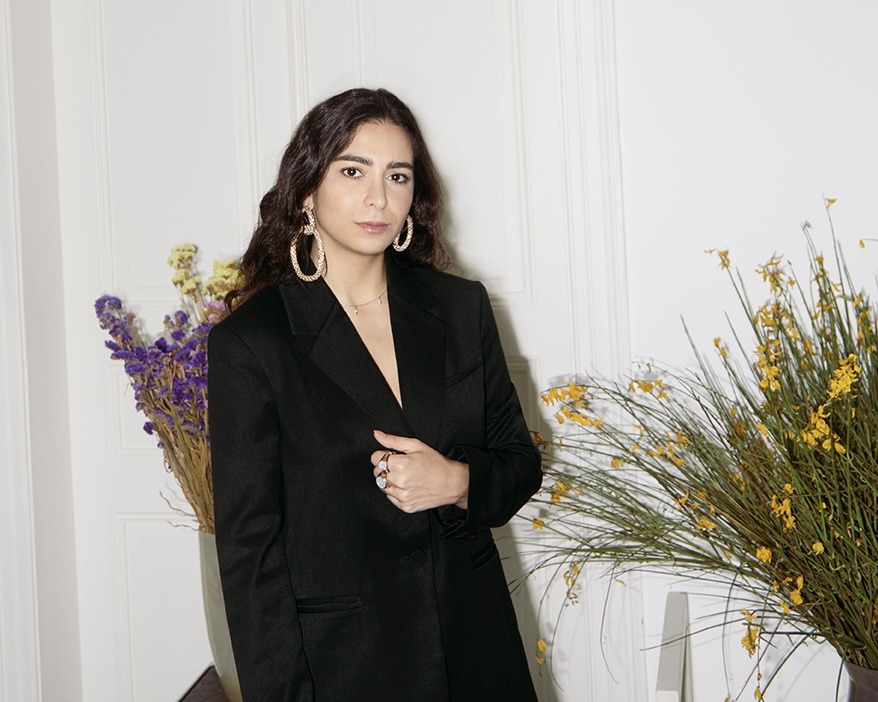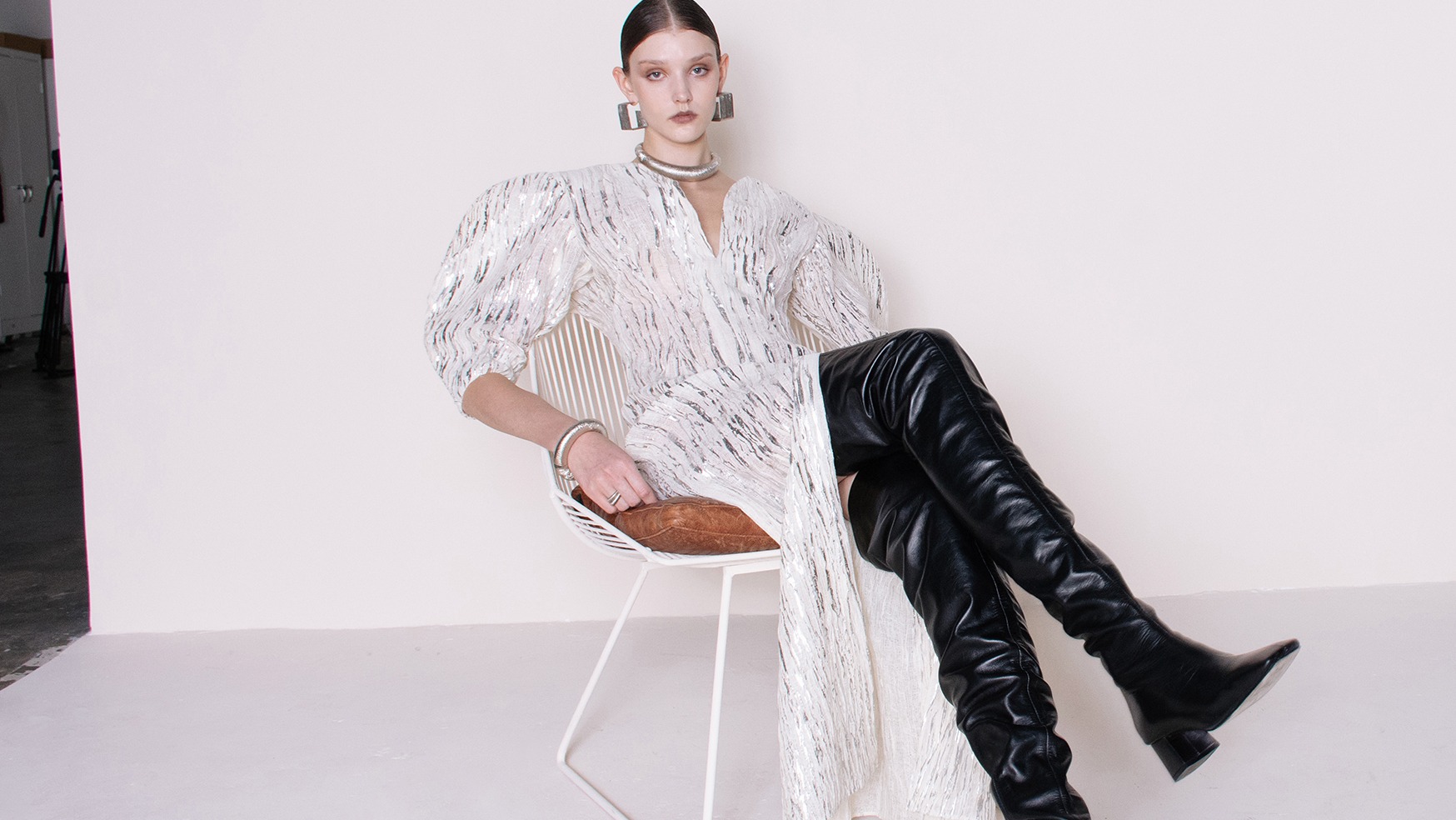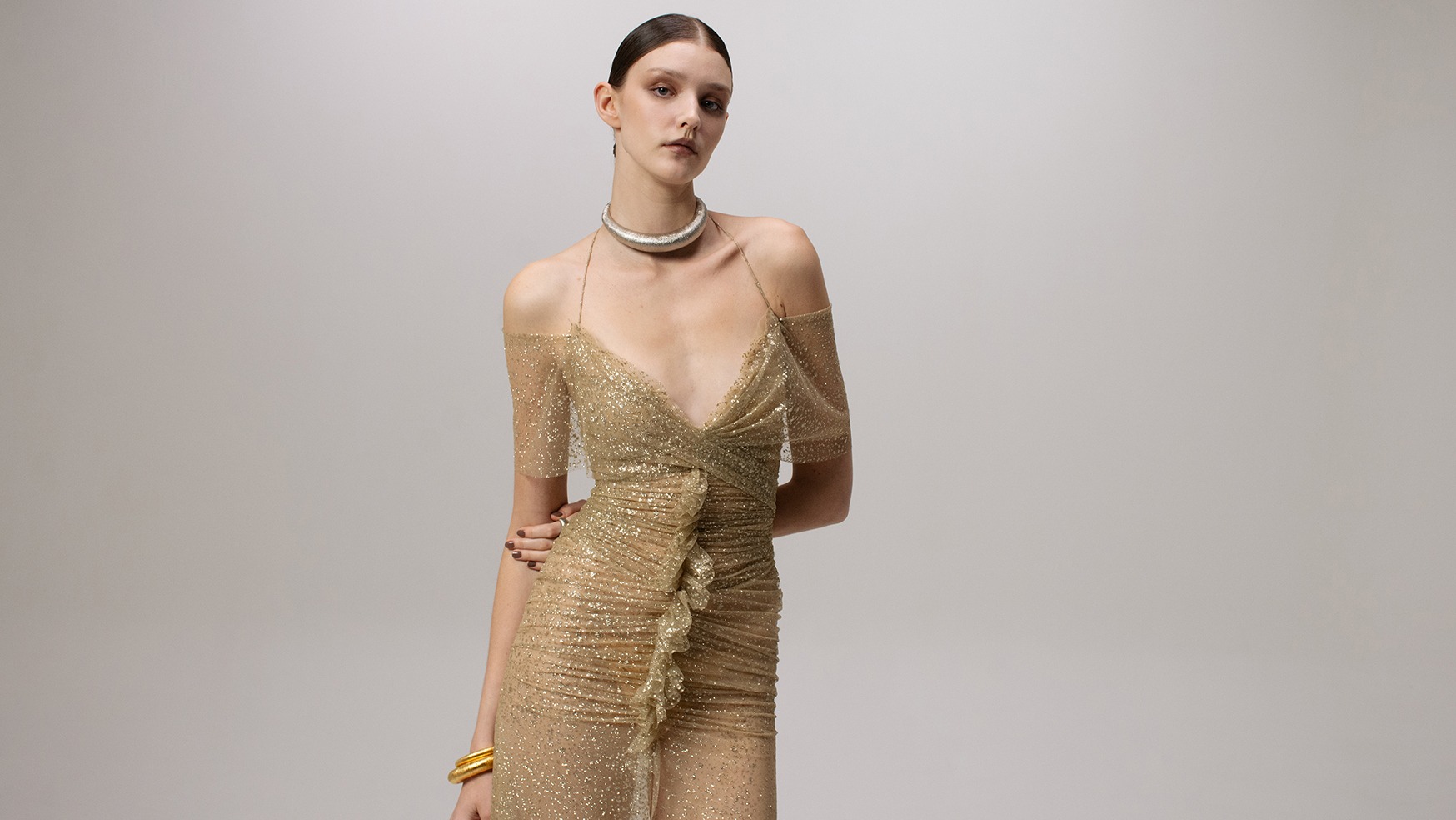Sandra Mansour is a Beirut-based designer known for creations that balance romanticism with strength. Since founding her fashion house in 2010, she has gained international recognition for her refined ready-to-wear and bespoke bridal pieces, defined by hand-embroidery, timeless silhouettes and a poetic sensibility. Her background in painting and deep passion for craftsmanship continue to guide her work, which reflects both the delicacy and resilience of her city Beirut. We spoke with the talented designer to learn more about her mantra, brand ethos and what’s next.

Your designs often blend romanticism with a strong, modern edge. How do you balance softness and strength in your creative process?
I never truly saw softness and strength as opposites; rather, they are two forces that constantly coexist. A sheer fabric can hold as much power as a sculptural silhouette, while a sharp cut can reveal vulnerability through the way it moves. For me, it’s about creating tension and dialogue between the two, allowing delicacy to stand tall and structure to breathe; that balance is where beauty emerges — when fragility doesn’t weaken strength, but instead magnifies it.
Growing up and working in Beirut, how has the city and its complex beauty shaped your aesthetic and vision as a designer?
Beirut has always been a city of dualities, where fragility and resilience live side by side. It’s a place where beauty often emerges from contrast: old and new, destruction and rebirth, chaos and poetry. Living and creating in this environment has shaped the way I see the world. It taught me that imperfection carries its own elegance, and that resilience can be as delicate as lace. This tension runs through my work, giving each piece an echo of the city’s spirit. Always vulnerable, always strong.

You were the first Arab designer to collaborate with H&M. What was the most surprising part of that experience, and how did it challenge or expand your brand identity?
What surprised me most was the reach, the way one story from my atelier suddenly touched women across the world. To see women everywhere wearing a piece that carried the soul of my craftsmanship was humbling and eye-opening. It reminded me that fashion, when rooted in sincerity, transcends borders. It challenged me to think about scale without losing intimacy, to understand how far craft can travel, yet still remain personal, poetic and authentic.

Fashion can be a form of storytelling. What story are you currently most interested in telling through your collections?
At this moment, I’m interested in telling stories of real women. Stories that embrace strength, fragility and everything in between. I see fashion as a way of capturing emotions that aren’t always visible, of translating what lies beneath the surface into fabrics, embroidery and silhouettes. It’s less about creating an idealized muse and more about reflecting the layered realities of women today.
For young designers in the Middle East trying to build their voice globally, what’s the most important piece of advice you would give?
My advice is simple: stay rooted in who you are. The world doesn’t connect to perfection or fleeting trends, it connects to honesty, to stories told with sincerity. Your culture, your background, your heritage, these are not limitations but treasures.

Lebanese designers have a strong reputation in global haute couture. What do you think sets Lebanese fashion apart on the international stage and how do you see it evolving?
Lebanese fashion is defined by its eye for detail and an unwavering devotion to craftsmanship. But it’s also born from a very particular context, where creating beauty often means working against instability and uncertainty. That struggle gives the work a different weight, a resilience that you can feel in every stitch. It’s a fashion language built on precision but infused with emotion. As it evolves, I see Lebanese fashion embracing not only couture but also ready-to-wear and collaborations, expanding the dialogue without losing its soul.
What’s next for Sandra Mansour?
For me, what’s next is always a continuation rather than a departure, to keep building collections that are rooted in craft, but that speak to the present moment. I want to create garments that carry stories, emotions and a certain timeless poetry.
———————————————————————————————————————————–
If you enjoyed reading this, check out our article on women ceramists in Lebanon.

